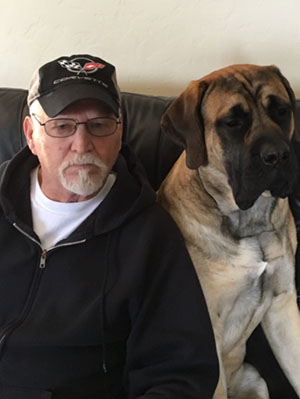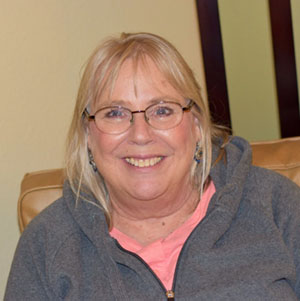Guy’s Story: Diagnosing & Treating CCF at the San Francisco VA
Author: Laurel Skurko, Marketing Director, UCSF Radiology and Biomedical Imaging

“My husband rarely complains,” said Jane McCarty, and it’s easy to believe. Guy McCarty saw a tour of duty in Vietnam as a very young soldier from 1966 to 1969 and has always been reticent about his experiences. That he’s not a complainer is a bit of an understatement. He has a Bronze Star, but doesn’t think of himself as heroic. For him, the heroes are POWs and those who lost their lives.
It was around Thanksgiving last year when Guy came out of a very challenging medical situation. It started about two months before, with an observation on the part of his family, says Jane, regarding his eyes. “We were noticing that his eyes were getting puffy, so we saw our local doctor, who diagnosed pink eye.”
Though the medicine prescribed didn’t help, Guy continued on in his quiet way, even as his vision got worse and the eye’s movement became restricted. One of the couple’s sons finally pushed them to have the problem looked at again.
The doctor they now saw urged them to get Guy to the San Francisco Veteran’s Administration Medical Center, a center that many don't realize is staffed 100% by UCSF physicians. “That doctor said, ‘I don’t know what it is, but it’s something big,’” said Jane. The couple immediately drove the five hours from their home in Arcata to the SFVAMC emergency room.
 “If our son hadn’t said something,” said Jane, “we’d still be taking eye drops.”
“If our son hadn’t said something,” said Jane, “we’d still be taking eye drops.”
The necessary measures at that point were far beyond eye drops, noted SFVAMC’s Danny Langston, NP, CNS, RNC, who coordinates patient care for neurointerventional services and helped the McCarty’s navigate the path for Guy’s treatment. Guy was on the verge of losing his eyesight by the time they got to the ER.
Help was available right away. “We had instant access to a neurologist and Guy got two MRIs and a spinal tap, right in the ER,” said Jane. Of Langston’s help, Jane said, “You see this guy who was supposed to be off work two hours ago sitting there getting you in for surgery the next day. He never said anything other than, ‘We’re going to get it done.’”
Working together, the San Francisco VA medical team led by Daniel Cooke, MD, diagnosed the problem as carotid cavernous fistula (CCF). The condition occurs when the high pressure carotid arterial develops a fistula, or small tear, and fills the cavernous sinus with blood. The fistula can be caused by trauma, as in a fall, or can develop over time from pressure created by hypertension or arteriosclerosis. Symptoms include a bulging eye, vision problems, and restricted eye movement. Although Guy didn’t mention pain, it’s typically a sign. CCF can result in blindness.
 “I have to tell you, the care he got in the ER was just unbelievable,” said Jane.
“I have to tell you, the care he got in the ER was just unbelievable,” said Jane.
That rapid coordination and commitment to teamwork extended throughout the McCarty’s experience at the SFVAMC. The world-renowned Neurointerventional Radiology team worked with the rest of the care team by embolizing the fistula and implanting platinum coils to normalize the pressure difference. Guy had a check-up angiogram at the VA six months later confirming all was well.
This Veterans Day, Jane and Guy planned to visit Arcata’s cemetery to place flags and flowers on graves in honor of those who have served. “He is been always very patriotic,” said Jane. But as is his quiet way, Guy will turn that focus on others.
“He saw a lot in Vietnam,” said Jane. “But he doesn’t regret it. It was his duty and that’s what he did. Now, thanks to the service of the San Francisco VA, it has come around.”
